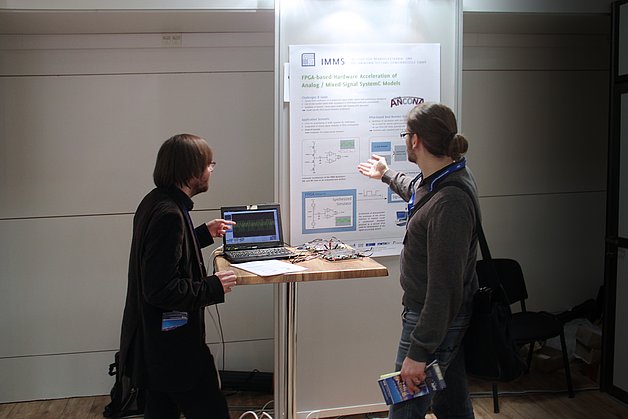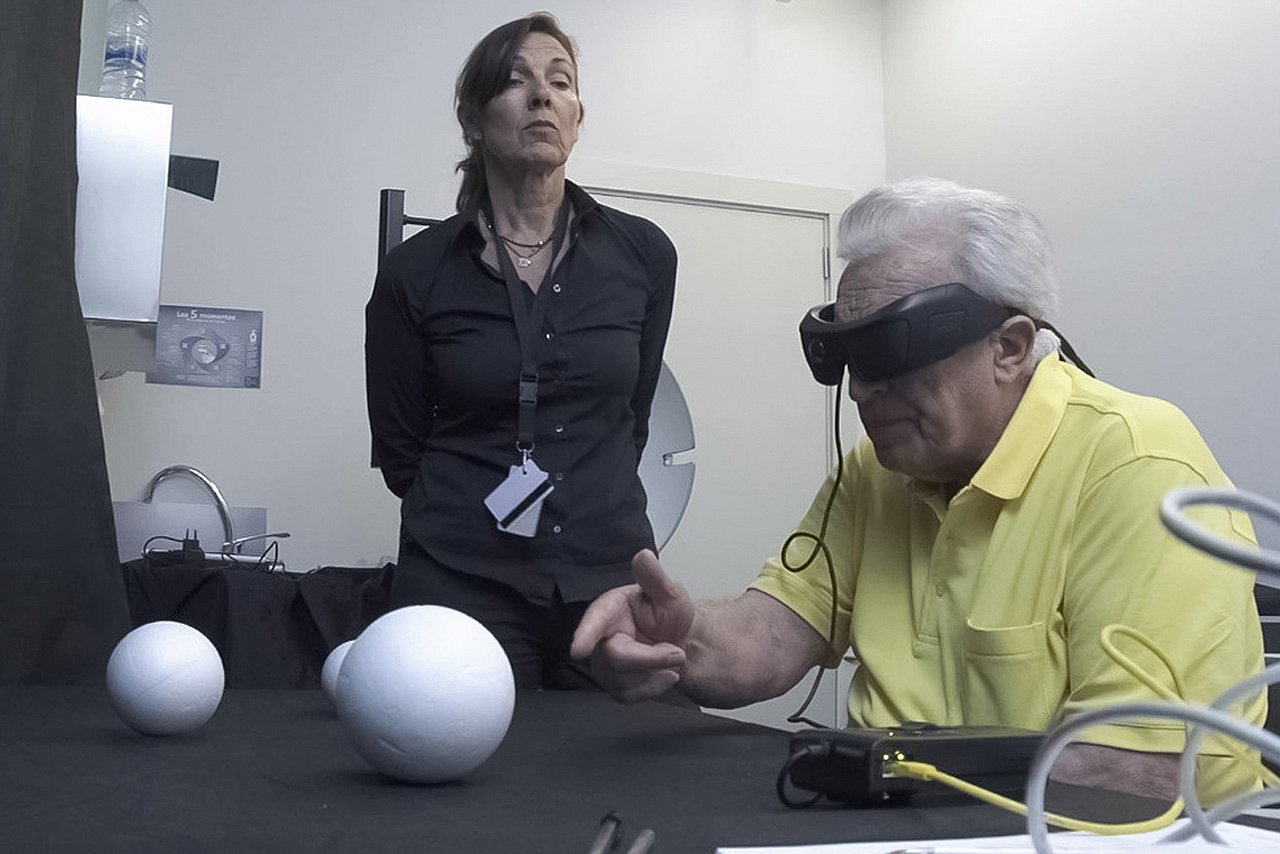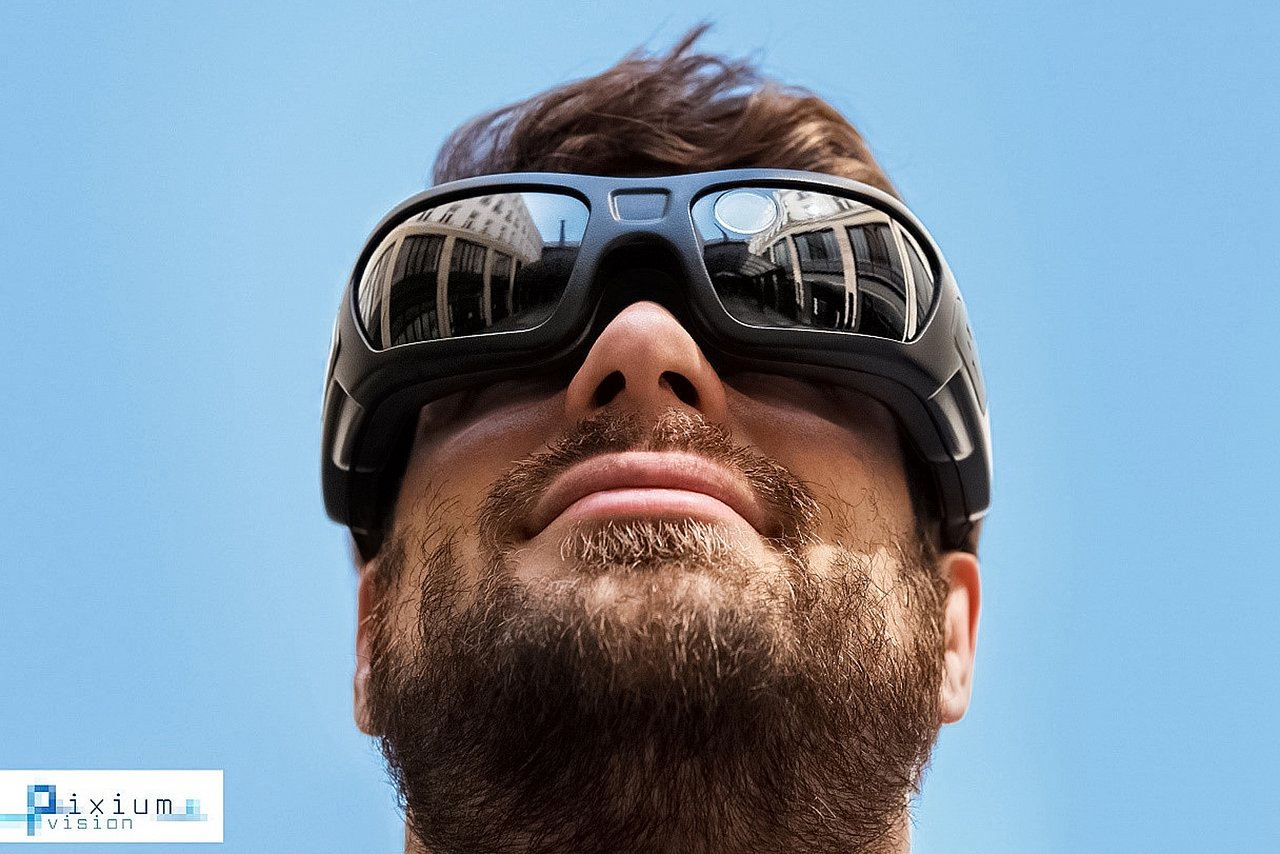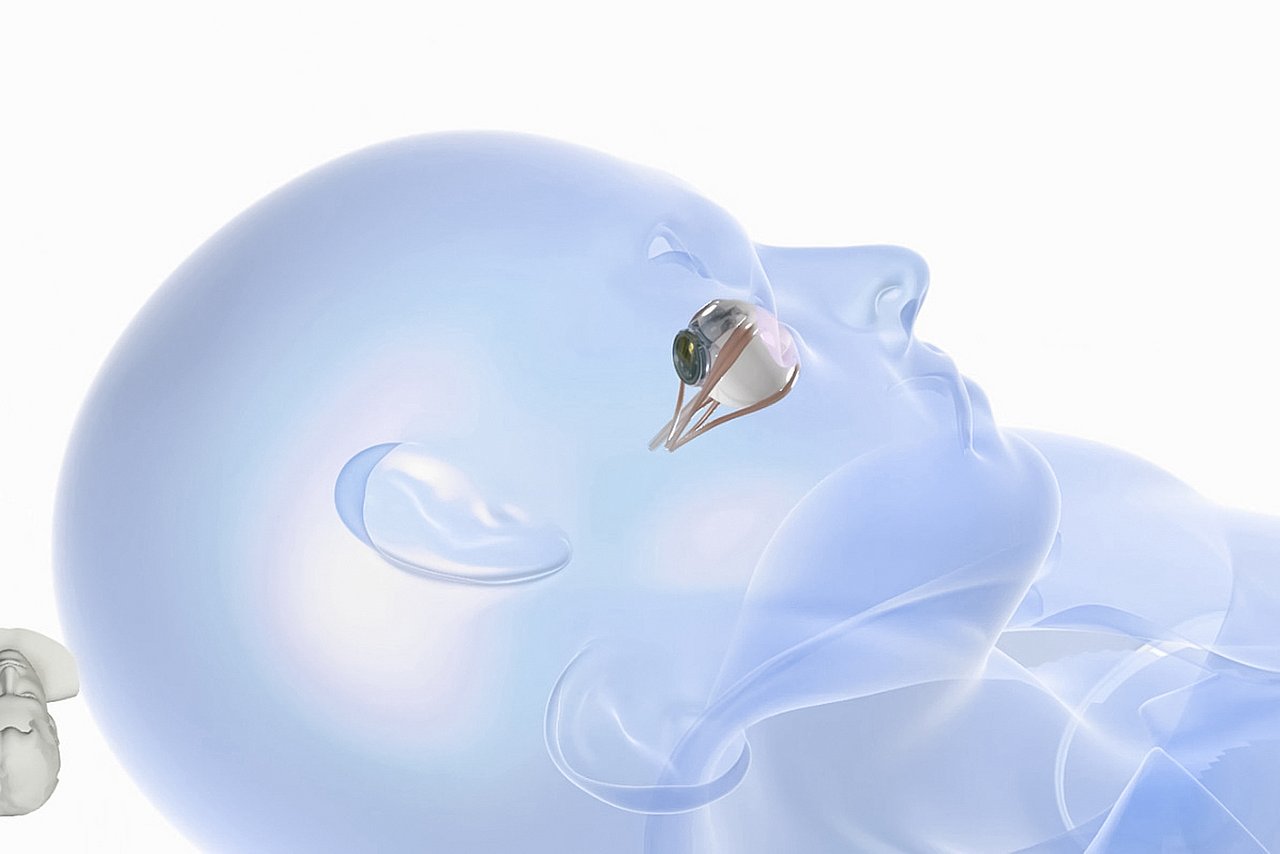Press releases
IRIS®II – Bionic vision system to compensate for blindness – microelectronics for a retinal implant
IMMS presents Pixium Vision‘s epi-retinal system at MEDICA, Nov 13th – 16th, Hall 3/G60
10th November 2017. At the MEDICA trade fair in Düsseldorf, Germany, IMMS will present a Bionic Vision System for the treatment of blindness. The epi-retinal IRIS®II system from Pixium Vision incorporates a biocompatible microelectronic implantable chip developed by IMMS especially for this application. The chip is part of a retinal implant with which people who have lost their sight from retinitis pigmentosa but with an intact optic nerve are learning to partially see again. A camera integrated into the spectacles records images of the environment which are transferred through the pupil to the retinal implant. There, the IMMS chip converts the optical information into an electronic data stream which is passed to the retina stimulator for the excitation of the optic nerve cells to elicit visual perception in the brain. The patients of the IRIS®II European clinical trial are currently learning to interpret the new perception in their re-education program. At MEDICA, IMMS will present the system with which those patients are being equipped and video examples from the study with patients' experiences.
The challenges for microelectronic implants
„Such a retinal implant is a big challenge from an engineering point of view, not only with regards to miniaturisation and functionality“ says Khalid Ishaque, CEO of Pixium Vision, looking back over 15 years of research and development. „Imagine wanting to have a working TV underwater in the Mediterranean Sea, which is warm, moving and salty. It’s kind of similar challenge for such a microelectronic implant in your eye.“ The electronic implant needs to be flexible and function while the eyeball is moving. In addition, it has to operate energy-efficiently and within harmless thermal safety thresholds. Furthermore, in the human body, power supply cannot be delivered with a direct current, usual for such circuits. So for the chip design a solution with alternating voltage had to be found.
IMMS chip translates images to signals for the intact optic nerve
The infrared receiver chip developed by IMMS is implanted into the inner eyeball and translates the incoming information from the optical interface into a current signal which is transferred to the stimulator chip. As essential elements for implementing this functionality IMMS created and tested the photodiode, the control circuit for signal detection and the output driver. For a minimum energy consumption, for a low heat generation and for a constant operational state IMMS has implemented circuit design concepts which only need a current consumption of less than 120 µA.
IMMS has developed an energy supply for the chip using alternating voltage, which is transformed by a rectifier into an internal direct current exclusively used in the hermetically sealed circuit. For this reason, the evaluation of the supply current could not be run using standard measurements. Therefore, IMMS has developed an especially adapted measuring method with which the value of the supply current is being identified with the use of an inductive current probe.
„IMMS delivered a vital contribution to our goal of restoring partial perception to people with vision loss from retinitis pigmentosa. The chip made by IMMS is the fundamental part of the gateway between the real world to the eye through the optic nerve and the brain of the patient,“ according to Khalid Ishaque. “But for him, after surgery the hard work starts – which involves retraining the brain.“ For this huge challenge Pixium Vision has been cooperating with multi-disciplinary partners at the cutting edge of neuroscience, physics, optics and mathematics, microsurgery, ophthalmic surgery, and low vision experts. „This global ecosystem of partners is critical to the success on this journey, which was not so long ago considered impossible.“
The future:
Pixium Vision has also been authorized to start a clinical study in Human for PRIMA, a sub-retinal miniaturized wireless implant system to treat advanced atrophic dry-AMD, the most prevalent form of age-related macular degeneration.
Related content

Project
IR_RX
IMMS’ biocompatible microelectronic chip is part of a retinal implant system with which blind patients are learning to see again.

Event,
MEDICA 2017
Hall 3 / G60: joint booth DiagnostikNet-BB Netzwerk Diagnostik Berlin-Brandenburg e.V.
Contact
Contact
Dipl.-Hdl. Dipl.-Des. Beate Hövelmans
Head of Corporate Communications
beate.hoevelmans(at)imms.de+49 (0) 3677 874 93 13
Beate Hövelmans is responsible for the text and image editorial work on this website, for the social media presence of IMMS on LinkedIn and YouTube, the annual reports, for press and media relations with regional and specialist media and other communication formats. She provides texts, photographs and video material for your reporting on IMMS, arranges contacts for interviews and is the contact person for events.






